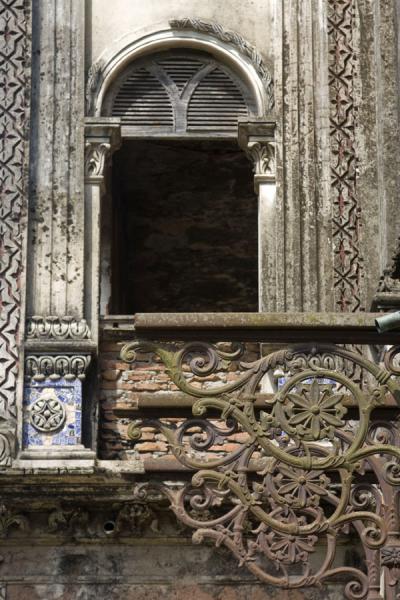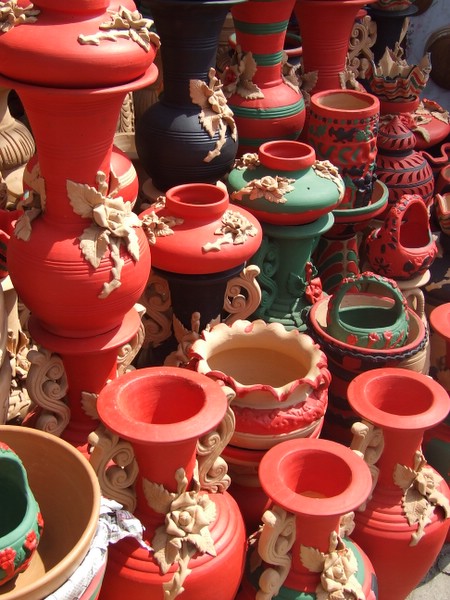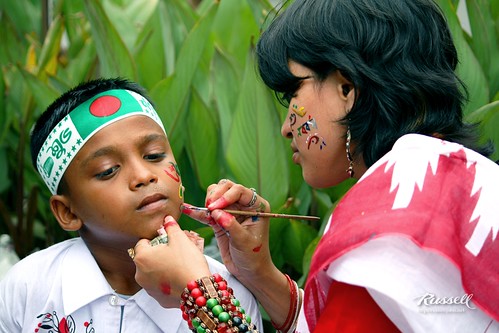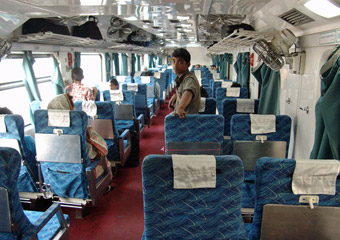On this score, you should have your own plan for an alternate activity or route in case the scheduled itinerary starts to collapse, folks get combative or you realize you want to move at a different pace than the group. In the end the quality of your trip is in your hands alone, and you need to accept that responsibility.
Traveling in Bangladesh
Traveling to Bangladesh is quite affordable through Air India, especially when using an online service that offers cheap flights. In addition traveling through Bangladesh is cheap as well.
Friday, July 29, 2011
Break ranks as necessary
There is no rule that says a group that starts the day together must finish the day together. On several of our outings, we started out with other folks, saw a couple of things in which we all had interest, and then split up. In one case, we didn't see the other people for a few days after that. No big deal; we had a great morning together, and a great afternoon apart.
Don't be over-ambitious
The single most common error in traveling with a group is to set too strenuous a schedule; even small groups are not as nimble as you and a bud can be, and you would do well to realize this up front. Setting yourselves up for, and then trying to execute, a forced march through countless sites with a large group is represented as a ring of Dante's Purgatorio, if I recall correctly
Speak up, but listen well
As during the planning phase, once you are underway make sure everyone has a voice in what happens during your ambles, and be respectful of their traveling styles.
You will need to speak up if you want any say in the proceedings. In particular, if you have something that folks need to know — you are calling home at exactly 2 p.m., or you are short on cash — you need to share it. Conversely, pay attention when someone has a special request or requirement for meals, breaks or similar needs. For example, you will want to know if someone in the group is a vegetarian before you insist on eating at Maison du Boeuf or La Casa de Vaca.
Not everyone necessarily needs to have an equal voice. If one person likes to be out front at all times, and another person likes to ride the caboose and simply follow along for the ride, it is often best simply to let them do so. Let the conductor steer the train, and the caboose rider catch the sights as they go by. Both will likely be happy in their chosen roles.
Let folks play to their strengths
As you get underway, it will become clear who has the best sense of direction, who can read maps fast and well, who is happiest asking questions and directions of strangers, who can speak a foreign language best, who excels at handling money, etc. Let those people do those jobs with which they are most happy and at which they are most competent. This way the workload gets spread around, everyone feels useful and valued, and things actually get done.
If someone falls into one of these roles, encourage and thank them for it; it can be difficult and thankless work figuring out train schedules or restaurant bill portions for an unappreciative mob.
Of course, in a large group there is always the risk that a "control freak" wants to do everything and make every decision, but I have also found that the large numbers can tend to lessen the ultimate impact of these folks.
Have your own must-do or must-see
You don't want to drop a few thousand dollars on travel, lodging, admission and bruising exchange rates only to get on a plane home having failed to do the one thing you really wanted to do. Although I do sometimes recommend it (Return trips: Why the second time's a charm), few people take repeat vacations to the same major cities — so if you have a bucket list item that needs crossing off, don't fail to make it happen.
On this trip, I was traveling with my family, and our 4-year-old wanted to see the clock that Peter Pan lands on (Big Ben, obviously), as well as the playground with the ships and teepees — but he also wanted to see the statue of Peter Pan. We scheduled the statue last, as it seemed the least compelling of the lot, and when a typical flash London rainstorm rolled in toward the end of the day, we never made it.
He didn't seem to mind, but when he got back to pre-school a few days later, the first question the kids asked was "Did you see Peter Pan?" Despite having seen the clock and the ship, he couldn't quite answer yes, and it was a (very) small disappointment, I could tellShare your knowledge
Almost everyone in the large group had done a bit of research, much of it reflecting their own expertise and interests, so that when they all started throwing out ideas and suggestions, in the aggregate it was like having the ultimate guidebook writer sitting in the room with you outlining your perfect itinerary
Talk it out
The exercise of having everyone more or less in the same room, where preferences and approaches could be aired out, really seemed to help this group. After 45 minutes of discussion, it was very clear who wanted to do what, what time folks wanted to get started, whose tastes more or less synched up, and which folks really wanted no part of the whole thing. Getting these right is really the heart of traveling together.
Making sure everyone had a voice — or at least enough air to get some words in — was an important part of the exercise; despite their different styles and energy levels, everyone made some kind of positive contribution to the discussion. Even Eeyore was helpful, forcing everyone to be a bit more realistic (and it turned out rightfully so) about things like transit times and crowds.
survive group travel
On a recent combined business/leisure trip to London, I ended up in a large living room with a group of more than 20 young women who were trying to plan their day in London. Different travel styles emerged almost immediately: Captain Planner was making written checklists ranked by priority, with Definitely's, Maybe's, If Possible's and Maybe Next Week's. The Tourist was listing off obvious landmarks and looking up prices for bus tours. Eeyore the Traveler was bemoaning every idea as boring, too far away or likely to have long lines, and wondering aloud if they should just stay home and read. The Laissez-Faire Traveler was sitting on the couch flipping through a magazine, saying every so often, "You guys are crazy; just pick one thing and then figure it out after you get there." The Shopper had but one idea: go into town, get a drink and go shopping.
These were just the stylistic differences; the choices of preferred sights offered proof that there's no accounting for taste. At one end of the spectrum was a murderous schedule of high-culture museum visits; at the other end of the spectrum was a schedule of visits to the sites of famous murders. In between, just about every London landmark ever to grace a guidebook was mentioned at least once.
There is no reconciling someone who wants to go to the Tate with someone who wants to take their kid to the Peter Pan statue and playground. It will never happen. Sure, some kids would put up with Miro mobiles at the Tate Modern, but not the Tate proper.
Similarly, there are people who want always to be with large groups of people, and others who would rather travel in smaller groups, which they may find more manageable for reasons logistical, emotional or financial. If you find yourself trying to reconcile a dozen or more diverging interests, here are my tips for keeping the peace and the pace when traveling with a large group of friends, family, colleagues or acquaintances (or even frenemies, as the case may be).
group discounts
If your final group is large enough, it may qualify you for considerable discounts at many attractions. These discounts are often best arranged or even purchased in advance, but if this isn't an option, it is simple enough to ask.
Traveling in Bangladesh: trip planning service
For big trips, you might consider a travel planning service that walks you through many of the steps above; check out Triporama.com, TripIt.com, TripHub.com, Groupon.com, LivingSocial.com and PayDivvy.com (for divvying up expenses). There are apps for some of these as well.
In the end, while the original intention was to travel as a roving horde, the large group sitting around the living room ultimately split off into a handful of smaller groups — pretty much the same individuals who were most comfortable at dinner together, or when walking around, or when picking roommates. That is, everyone went for their comfort zone, which has its own rewards. But the living room exercise was hardly for naught; on multiple occasions over the next few days, the groups stumbled across one another unexpectedly in pursuit of common interests, and the recombined groups showed a powerfully increased energy level. Everyone got to do what they wanted, sometimes on their own, sometimes together — and always the better for it.
Friday, July 22, 2011
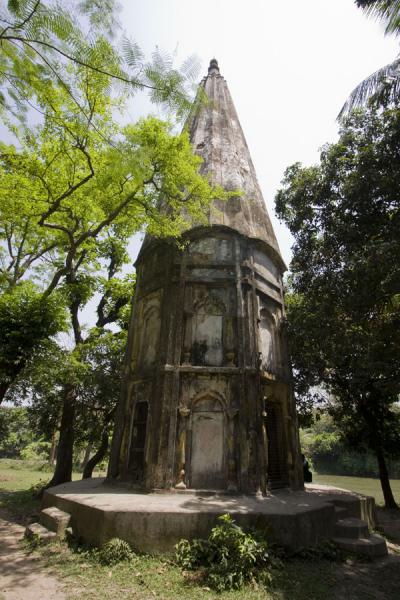
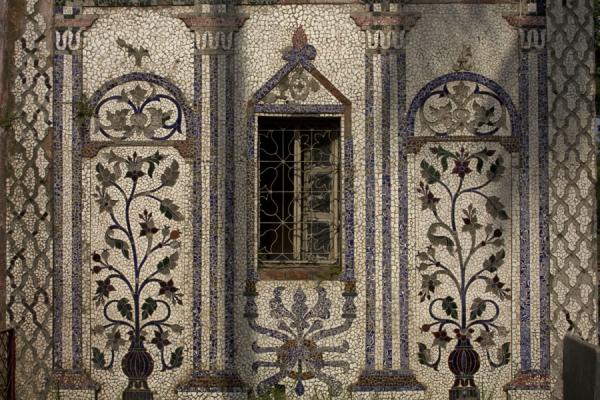
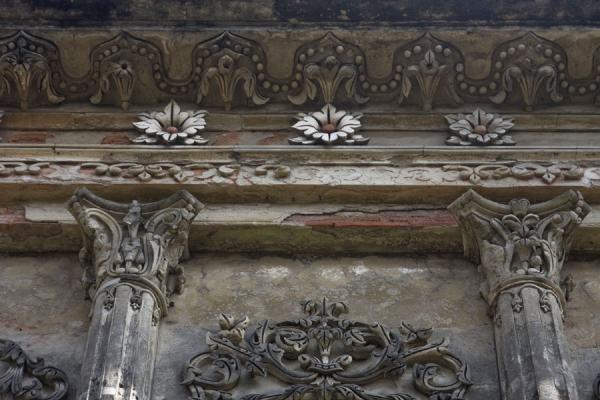 Since the year 2000 tourists arriving in Bangladesh have been swelling in numbers. Also travelling further within the country and visiting places like Cox' Bazaar, Teknaf, the Sundarbans, Kolkata, Paharpur and Tetulia. Not only is it international visitors but locals are also taking their holidays and coming to Dhaka, Khulna and Chittagong. All these travelers require appropriate accommodation and the demand in hotel beds and restaurants are now being met for every taste and every budget. Many of the visitors are expariate Bangladeshi coming to Bangladesh not only to visit their families, but for a holiday and to experience the vibrant and culturally rich country of their forbearers. Catering for all these people have seen an increase in the demand for new hotels and restaurants in Dhaka and other tourist locations.
Since the year 2000 tourists arriving in Bangladesh have been swelling in numbers. Also travelling further within the country and visiting places like Cox' Bazaar, Teknaf, the Sundarbans, Kolkata, Paharpur and Tetulia. Not only is it international visitors but locals are also taking their holidays and coming to Dhaka, Khulna and Chittagong. All these travelers require appropriate accommodation and the demand in hotel beds and restaurants are now being met for every taste and every budget. Many of the visitors are expariate Bangladeshi coming to Bangladesh not only to visit their families, but for a holiday and to experience the vibrant and culturally rich country of their forbearers. Catering for all these people have seen an increase in the demand for new hotels and restaurants in Dhaka and other tourist locations.Climate Of Bangladesh

 Bangladesh has a sub tropical monsoon climate. There are six seasons in a year; Winter (Dec-Jan), spring (Feb-Mar), Summer (Apr-May), Monsoon (June-July), Autumn (Aug-Sep) and Late Autumn (Oct-Nov). The average temperature across the country usually ranges between 9 C - 29 C in winter months and between 21 C - 34 C during summer months. Annual rainfall varies from 160 cm to 200 cm in the west, 200 cm to 400 cm in the south-east and 250 cm to 400 cm in the north-east. Cyclones above category three/four are uncommon (especially in the deep winter January through March)-- but while rare, can still bring widespread disruption as expected to infrastructure and power outages, especially in the coastal areas. The weather pattern is akin to the Gulf Coast in the United States (Alabama, Mississippi and Louisiana).
Bangladesh has a sub tropical monsoon climate. There are six seasons in a year; Winter (Dec-Jan), spring (Feb-Mar), Summer (Apr-May), Monsoon (June-July), Autumn (Aug-Sep) and Late Autumn (Oct-Nov). The average temperature across the country usually ranges between 9 C - 29 C in winter months and between 21 C - 34 C during summer months. Annual rainfall varies from 160 cm to 200 cm in the west, 200 cm to 400 cm in the south-east and 250 cm to 400 cm in the north-east. Cyclones above category three/four are uncommon (especially in the deep winter January through March)-- but while rare, can still bring widespread disruption as expected to infrastructure and power outages, especially in the coastal areas. The weather pattern is akin to the Gulf Coast in the United States (Alabama, Mississippi and Louisiana). The current weather can be seen by hitting the 'play' button on the following interactive map, Current Bangladesh Satellite Weather Radar
Holidays
- Pohela Boishakh - The most widely celebrated secular national festival of the country. Here people from all walks of life participate in various cultural shows called Boishakhi Mela,wearing national dress (kurta or Shari), eating sweets and wishing every one happy new year.
- Ekushey - National Mother Language Day - February 21. This day marks the anniversary of the martyrs that died in 1952 while protesting the imposition of Urdu, in the name of Islam, as the mother-tongue. The uprisings to support Bungle as the mother language fueled the movement towards secular nationalism that culminated in independence in 1971. The holiday is marked by (one of the most colorful events in Asia) tributes to the martyrs by political leaders, intellectuals, poets, writers, artisans and singing beginning at one minute after midnight on the 21st. Government offices are closed, and expect traffic disruption from February 20.
- Independence day - March 26th- On this day 'Father of the Nation' Bangabandhu Sheikh Mujibur Rahman proclaimed country's independence.
- Victory day - December 16th- On this day Pakistani occupied forces surrendered to joint Bangladeshi & Indian forces.
- Eid-ul-Fitr - the largest Muslim holiday of the year, it celebrates the end of the holy month of Ramazan. Food is the highlight, and if you're lucky you'll be invited into a private home for a feast. Businesses close for at least a couple days if not a week.
- Eid-ul-Azha - is the second largest Muslim festival.
- Durga Puja - Four days around October. The largest Hindu festival in the country, it goes on for several days with festivities varying each day.
- Christmas - December 25th, This is the largest Festival of Christian Community in the country which is declared as a government holiday. A prayer is held at Tejgaon Church at 11 PM (Local Time) in 24th December. Also some other churches in Dhaka also arrange prayer at 24th December.
Cities Of Bangladesh
Traveling By plane
There are airports in all of the division capitals and in Jessore, Cox's Bazar and some other small cities. Most of the domestic airports are served by either Biman Air , the national airline, or GMG Airlines , their private competitor.
Biman had the interesting distinction of flying the half-hour Dhaka-Chittagong (DAC-CGP) leg (~250 miles) on DC-10's and Airbus A-310's - both large wide-body jets.
United Airways , Regent Airways and Royal Bengal Airlines are three private operators offering excellent domestic and international flights. Regent is a new operator in 2010 and has new aircraft. Most of the private operators use the Bombardier DASH-8.
Traveling By bus
Local Bangladeshi buses are generally crowded, often to the extent of people riding on the bus steps (entrance) and sometimes even the roof. The state run Bangladesh Road Transport Corporation (BRTC) buses usually fall into this category. Avoid all of the low cost buses - they are easy to spot by their poor condition. There are daily fatal accidents involving them. If you do use them, it is worth noting that they do not usually stop, but rather slow down slightly to let passengers on or off. Additionally, fare collectors, disconcertingly, do not wear uniform making them difficult to identify. If you do not speak the language you may have to simply jump on the bus (literally) and give money to the first person who asks you.
However, there are luxurious air conditioned bus services connecting major cities and popular tourist destinations. Green Line , Shyamoli , SilkLine and Shohagh usually have a couple different offices dotted around the cities they serve. Greenline has a few Scania buses running between Dhaka, Chittagong and Cox's Bazar that offer a level of comfort you've probably never seen in a bus before - they cost about 1/3 more than their Volvo buses, but are comparable to business class on an airplane, at least.
Traveling By train
Bangladesh Railways is the state and only train operator. The ticket prices are reasonable and usually similar to bus ticket prices and sometimes even cheaper. However, due to the roundabout routes and tricky river crossings, the journey durations are usually much longer. Tickets can be booked over the phone, though unless you speak Bengali you're likely to get better results at one of the computerized station booking offices.
Trains are generally comfortable, with more leg room than buses. Though the carriages are generally not very clean, the AC and 1st class seats are manageable. Sulob class is the highest 2nd class ticket, with reserved seating and not much different from 1st class (except in price).
Kamlapur Rail Station in Dhaka is large and modern. It serves all major cities but due to the existence of broad gauge and meter gauge tracks around the country it may be required to change trains en route
Traveling By boat
There are over 230 mighty and small rivers throughout the country, and boats and ferries are an integral part of travel for locals and tourists alike. A journey along the river in any mode is probably the best way to see Bangladesh. There are a number of private tour operators offering river sightseeing trips of various lengths, or using the ferries to get between cities is a great way to see the country at a moderate pace. The Rocket Steamer service connects Dhaka and Khulna via Barisal, and is a fantastic way to enjoy riverine Bangladesh, for those who prefer the scenic route. The 4 ferries are operated by BIWTC and run several times per week in each direction. It's advisable to book several days in advance if possible. While there are several different classes it's unlikely that you will end up in anything but 1st or 2nd class. Both of these consist of around 10 small berths on the upper deck of the boat with 2 beds each and a sink (no doubt doubling as a urinal), and fairly clean shared bathrooms. There's a central dining/sitting room in each class with a chef cooking Bengali meals and the odd fish-and-chips or an omelette for around Tk 50-150. Cheaper food can be bought at the vendors in the lower classes on the bottom level. First class is at the front of the boat, with the bow made into a nice sitting area. If you're traveling single you must book 2 beds if you want a berth guaranteed to yourself in either class, though unless the boat is completely full it's unlikely they'll put someone in a foreigner's room even if you just pay for one. The full journey takes anywhere from 26-30 hours and costs Tk 1010/610 in first/second class. It's best avoided during the rainy seasons and during holidays when the launches get over crowded with home-returning city dwellers. The more eco-friendly may prefer to take their trash off with them: otherwise, it's likely to end up in the river at the end of the journey. BIWTC also operates many other more basic ferries that may be useful for smaller distances.
Talk
The national language is Bengali (Bangle) and is spoken everywhere. It's an Indo-Aryan language derived from Prakit, Pali and Sanskrit and written in its own script. Many Bangladeshis understand only limited English such as basic affirmatives, negatives, and some numbers. This is especially so in rural areas and among the lower socio-economic classes. Learning a few Bengali words ahead of your trip will prove very useful.
Two centuries of British colonization lead people to identify most foreigners as either British or Americans, and to view them with curiosity. The first question you will probably be asked is "What is your country?" ("Desh kothay?" in Bangla). If hawkers or rickshaw-wallahs are over-zealous in selling you their products or services, simply say "Amar dorkar nai" ("I don't need [this item]") or "Lagbey nah" ("No need") as a colloquial way of saying "No, thanks."
If you don't wish to give money to beggars and other unfortunates, simply tell them "Maaf koro" (with informal you) or "Maaf koren" (with polite/formal you), which means "Pardon me"; or you can apply a tricky concept by saying "Amar bangthi poisha nai", meaning "I have no change." Above all, if you're refusing a service or product, don't linger. Walk on as you say these phrases. Otherwise, your lingering may be misinterpreted by peddlers as your uncertainty about refusal.
The national language is Bengali (Bangle) and is spoken everywhere. It's an Indo-Aryan language derived from Prakit, Pali and Sanskrit and written in its own script. Many Bangladeshis understand only limited English such as basic affirmatives, negatives, and some numbers. This is especially so in rural areas and among the lower socio-economic classes. Learning a few Bengali words ahead of your trip will prove very useful.
Two centuries of British colonization lead people to identify most foreigners as either British or Americans, and to view them with curiosity. The first question you will probably be asked is "What is your country?" ("Desh kothay?" in Bangla). If hawkers or rickshaw-wallahs are over-zealous in selling you their products or services, simply say "Amar dorkar nai" ("I don't need [this item]") or "Lagbey nah" ("No need") as a colloquial way of saying "No, thanks."
If you don't wish to give money to beggars and other unfortunates, simply tell them "Maaf koro" (with informal you) or "Maaf koren" (with polite/formal you), which means "Pardon me"; or you can apply a tricky concept by saying "Amar bangthi poisha nai", meaning "I have no change." Above all, if you're refusing a service or product, don't linger. Walk on as you say these phrases. Otherwise, your lingering may be misinterpreted by peddlers as your uncertainty about refusal.
The national language is Bengali (Bangle) and is spoken everywhere. It's an Indo-Aryan language derived from Prakit, Pali and Sanskrit and written in its own script. Many Bangladeshis understand only limited English such as basic affirmatives, negatives, and some numbers. This is especially so in rural areas and among the lower socio-economic classes. Learning a few Bengali words ahead of your trip will prove very useful.
Two centuries of British colonization lead people to identify most foreigners as either British or Americans, and to view them with curiosity. The first question you will probably be asked is "What is your country?" ("Desh kothay?" in Bangla). If hawkers or rickshaw-wallahs are over-zealous in selling you their products or services, simply say "Amar dorkar nai" ("I don't need [this item]") or "Lagbey nah" ("No need") as a colloquial way of saying "No, thanks."
If you don't wish to give money to beggars and other unfortunates, simply tell them "Maaf koro" (with informal you) or "Maaf koren" (with polite/formal you), which means "Pardon me"; or you can apply a tricky concept by saying "Amar bangthi poisha nai", meaning "I have no change." Above all, if you're refusing a service or product, don't linger. Walk on as you say these phrases. Otherwise, your lingering may be misinterpreted by peddlers as your uncertainty about refusal.
Buy
Eat
Bangladesh is a fish lover's paradise. Traditionally most of the country lives off of the once-bountiful fresh-water river fish, especially the officially designated "national fish" hilsa. The hilsa is a flavourful but very boney (with many fine bones) fish; if you can master eating this fish, consider yourself on par with the locals in fish-eating and deboning expertise. Various recipes exist for cooking hilsa, suitable for all seasons and all regions of the country. Mutton is also popular, as in most Muslim countries, as is decidedly lean or hard chicken. Rice is almost always the staple side dish.
Mixed vegetable curries are plentiful - potato, eggplant, squash and tomatoes are the staple ingredients. Gourds, tubers and certain root vegetables are common. In the major cities (Dhaka, Chittagong, etc.), you will find a larger variety of vegetables than in rural areas.
The idea of salad varies from the international standard. In Bangladesh, salad has not been extensively developed, and "kacha" (raw) vegetables are generally not deemed very appetizing or palatable (with the exception of cucumbers), especially in more rural or suburban areas and in less Westernized households. Traditionally, most salad vegetables (carrots, celery, lettuce, paprika, etc.) were not even grown in most agrarian households, so the use of these vegetables was extremely rare. Hence, borrowing from the Mughal traditions, a few round slices of onions and cucumbers, spiced with salt, chilies, etc., is often treated as a full plate of salad.
Dal is usually a given side dish or meal course for all households, even the poorest or most rural (who often cannot afford any other daily meal courses). Most Bangladeshi dal varies from its West Bengali counterpart, and even more so from its other Indian counterparts, primarily because it is more watery and less concentrated or spiced. An easy analogy would be that whereas most Indian dal is more like thick stew, most Bangladeshi dal is more like light soup or broth. The Hindus of Bangladesh have greater varieties of Dal recipes, just as they have greater varieties of vegetarian dishes. The Muslims have thicker and more spiced varieties of dal. Dal recipes vary regionally in Bangladesh, so be careful not to over-generalize after a brief experience.
Boiled eggs (dhim) are a popular snack (Tk 3-5), and fresh fruit is abundant, such as bananas (Tk 2/ea), apples (chinese, Tk 80-100/kg), oranges, grapes, pomegranates and papayas. Delicious and diverse, mangos (Tk 50-150/kg) are a very popular fruit throughout Bangladesh.
Fast food restaurants and bakeries serving burgers, kababs, spring rolls, vegetable patties and just about anything else you can throw in a deep fryer are dotted around most cities. Most items will run around Tk 10/each.Bangladesh also has international fast food chains like Pizza Hut, KFC, A&W, Nando's.
To enjoy the tastes of Dhaka one needs to go to old Dhaka. The Haji biriyani, Nanna biriyani are a must. Also Al Razzak restaurant is famous for its Shahi food. In order to savour local food one must go to Korai Gost at Dhanmondi Satmosjid road, Kasturi restaurant at Gulshan & Purana Paltan area. No one should leave Bangladesh without tasting the Phuchka and Chatpati available in the streets of Dhaka,Chittagong. Also there are loads of Chinese and Thai restaurants in Bangladesh which serve localized chinese and thai dishes.Bailey road in Dhaka is the unofficial food street of the nation followed by Satmoshjid Road.Dhaka also has Japanese, Korean and Indian restaurants located mostly in Gulshan area. For world class Ice creams do visit Moven pick, Club gelato in Gulshan. To taste Kebab, Babecue tonight in Dhanmondi is the best followed by Koyla in Gulshan.
Most Bangladeshis eat with their right hand as in neighboring countries. Never use your left hand to bring food to your mouth, though it's ok to use it for bringing a glass to your mouth or to serve food from a common dish with a spoon. Every restaurant will have a handwashing station (sometimes just a pitcher of water and a bowl if they don't have running water), and you should use this before and after the meal. In order to eat with your hand, rake in a little portion of the rice and a bit of the curry to an open space on your plate (usually create a bit of space on the side of the plate closest to you, sufficiently inward from the rim but NOT in the center of the plate), and mix the rice and curry with your fingers. Then, create a little ball or mound (it should be compact and modestly sized, but does not need to be perfectly shaped or anything--function over form!) of the mixture and pick it up with all your fingers, and scoop in into your mouth. Your fingers should not enter your mouth in the process, and your upper fingers and palms should not get dirty either. Only toddlers and foreigners/tourists are exempted from these rules. It doesn't matter a whole lot if you don't get it all exactly right, but know that the entire restaurant is watching and waiting to see if you do. Attempting to eat with your hands and failing miserably will raise many a smile. The use of cutlery (except serving spoons for common dishes) is lacking in rural areas and poorer households, and basic cutlery (i.e.: spoons, sometimes a fork) is sometimes available in urban restaurants and more Westernized, urban households. However, the use of hands is a more humble and culturally respectful gesture, especially from a tourist. Table-sharing is acceptable and even expected in most establishments, with the exception of nicer urban restaurants. Many places have separate curtained-off booths for women and families, a nice reprieve from prying eyes.
Drink
Nightlife in Bangladesh is nearly non-existent. Being a Muslim country, alcohol is frowned upon and found mostly in the international clubs and pricier restaurants in Dhaka and in some restaurants in tourist centers like Cox's Bazar. In Teknaf and on Saint Martins Island you may stumble upon the occasional beer smuggled in from Myanmar. Some of the nicest hotels in the cities have fully equipped bars with exaggerated prices to match. However, lack of commercial availability of liquor should not always be confused with cultural aversion to alcohol in mainstream society. You'll likely find that Bengali Christians and many urbanized, upper-class Muslims privately have a more liberal, Westernized attitude toward social consumption of alcohol. However most 5 Star Hotels like Radisson, Sheraton. Shonargoan, Regency etc and few clubs in Gulshan are arranging DJ / Dance parties on frequent basis. Foreigners may bump into one of those parties if they are lucky. Usual entrance fees of such parties aare around BDT 2000/- (USD 30). Young people of upper class and higher uper class of the society are the main portion of the formed crowd. How ever in some places, western clothed hired companions are available. Foreigners looking for a clean vacation should stay away from them using common sense. Liquires does not flow freely in these parties most of the time. Coffee is -- like the rest of the world, a perennial middle-class 'Adda' (gossip) accompaniment in this city. A favourite haunt for coffee-lovers (those with a 'Starbucks' bent) is 'Coffeeworld' , Dhaka branch addresses (about seven so far) given here, Dhaka Coffeeworld joints . Most coffee aficionados here rate their 'Caramel Macchiato' better than the plain Starbucks variety and cheaper to boot (about US$2)! In most places instant coffee will be the best you can find Tea is everywhere. Ask for red tea if you do not want milk. Fruit juices are plentiful, varied and delicious, though be wary of watered down or icy drinks and dirty blenders. Raw sugarcane juice is widely available during the hot season, and usually a safe, sanitary bet. Other safe bets are coconuts, popular in the southeast tourists spots like Cox's Bazar and Saint Martins Island.
Visit
Bangladesh is a country with lots of places to visit, many of which offer unforgettable experiences but remain relatively unknown to the rest of the world.
Dhaka (the Capital) is a pulsing, gritty conglomerate, one of the most densely populated cities in the world. It has a number of attractions for the tourists. They include, but are not limited to, the Lalbagh Quilla, Ahsan Manjil, Shaheed Minar, Boro Katra, Choto Katra, the National Museum, Jatiyo Songshad Bhaban(the Parliament Building) etc. The Suhrawardy Uddan and the Ramna Park are two parks that provide green respite to city dwellers. Other tourist attractions include places like Baitul Mukarram (National Mosque), the High Court Building, the Bangabandhu Museum, etc. If you're visiting only one thing, then the LalBagh Qilla fort is a must-see, in the older part of town. The older part of Dhaka, known as "Puran Dhaka", is literally a city of history, with hundred-year-old buildings crammed on each side of hundreds of narrow lanes. Each "Moholla" (city block) of Puran Dhaka is unique with its specialized shops and artisans and gives an authentic taste of what Dhaka is all about.
The rest of Bangladesh is also ornamented with thousands of gems, most of which remain hidden and await exploration. The names are endless, but the prominent ones include, Moynamoti, Paharpur (Shompur Bihar), Mohasthangor, Kantajir Mondir, Ramshagor, Shatgombuj Mosque, Khanjahan Ali's Shrine, Shriti Shoudho etc. These sites offer architectures from various eras of the country's history, including Buddhist, Hindu and Muslim eras and date back thousand years.
The natural beauty of Bangladesh can be explored away from the hustle and bustle of Dhaka, the Capital. Bangladesh has the longest unbroken sea beach in the world, the Cox Bazaar. Also, it has the largest mangrove forest in the world, the "Sundarbans" ("beautiful forests", named after the "Sundari" [beautiful] trees in it). The hill tracts of Rangamati, Khagrachori and "Bandarban" ("monkey forest") offer exciting trekking opportunities, while the Kaptai Lake (situated amongst the hills of Rangamati) can be considered a romantic getaway. The villages are the true countryside of Bangladesh and almost always have green paddy fields and yellow mustard fields with flowing rivers. Other natural wonders of Bangladesh include the Padma (Ganges) river, the Madhabkunda, Jaflong, the tea gardens of Sylhet/Sreemangal and Moulovibazar, etc.
Stay healthy
- Bottled water is recommended, as the tap water is often unsafe for foreign stomachs, and some hand-drawn tube wells are contaminated with naturally occurring arsenic. This will easily pass through filters designed only to screen out bacteria. A more environmentally friendly option is to boil your own water, or use purifying tablets. However, nothing short of distillation will remove arsenic.
- It's also wise to use discretion when eating from street vendors - make sure it's freshly cooked and hot.
- Mosquitoes can be abundant in some areas and cities, especially during the rainy and humid seasons, and nets covering your bed at night are often provided, even in some of the cheapest hotels and in all households.
- Consult your travel doctor about precautions against malaria and typhoid fever. Get vaccinated and take preventive and curative medication with you before you go.
- Pollution can be a problem, and in some of the cities like Dhaka and Chittagong you may wish you'd brought along an oxygen tank. While some effort has been shown recently to clean up the country such as the banning of plastic bags, there's still a long way to go and most people use the many waterways as garbage dumps - it would be unwise to swim in most of the rivers and downright senseless in a lake.



